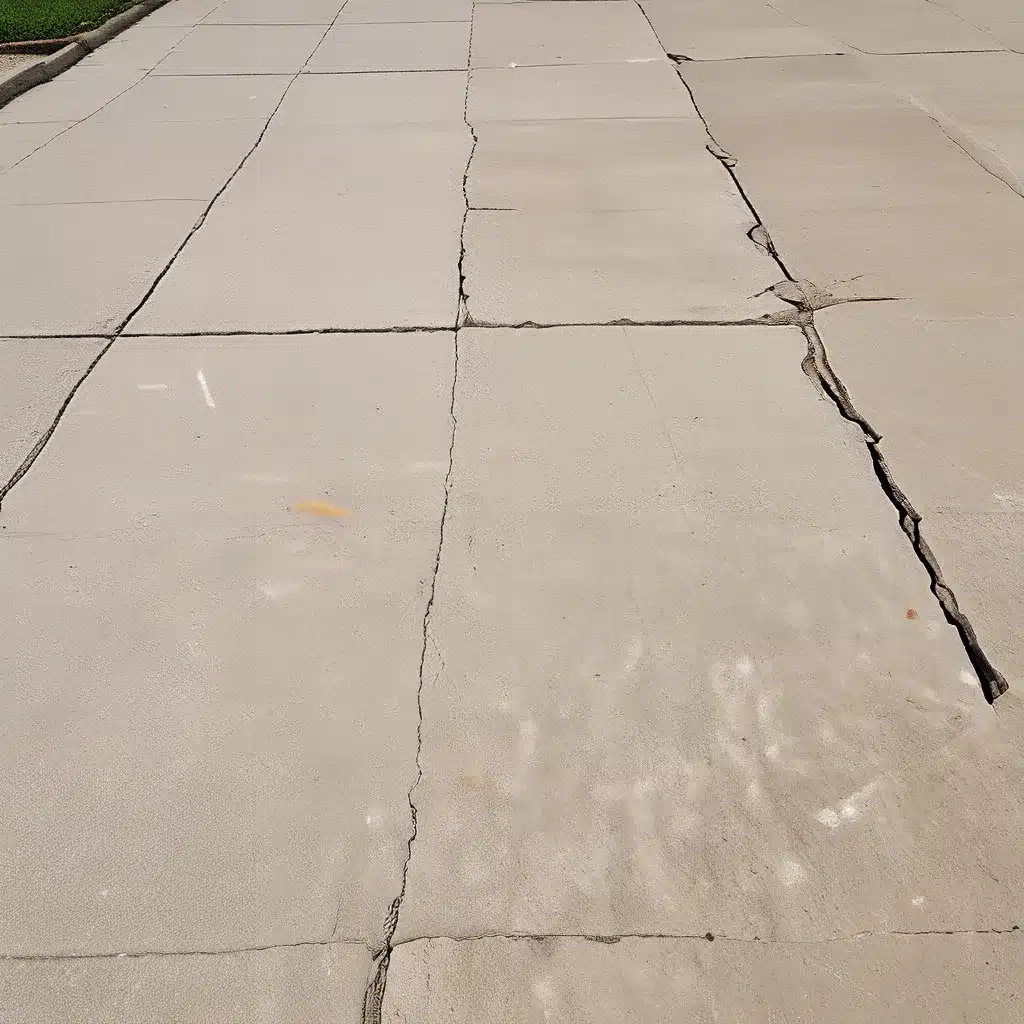
As a bustling metropolitan area, Kansas City is home to countless residential, commercial, and municipal concrete structures, from driveways and sidewalks to foundations and retaining walls. While these concrete elements are renowned for their durability and longevity, they are not immune to the inevitable wear and tear of time, weather, and use. One of the most common issues that can arise is the development of concrete cracks, which can pose significant safety risks if left unaddressed.
Recognizing Concrete Cracks: Causes and Consequences
Concrete cracks can manifest in a variety of forms, from hairline fissures to gaping fractures, and they can occur for a multitude of reasons. Expansion and contraction due to temperature changes, soil settlement, and heavy loading are just a few of the primary culprits behind concrete cracking. These structural flaws not only detract from the aesthetic appeal of a property but can also compromise the safety and integrity of the concrete, potentially leading to more severe issues down the line.
Unattended concrete cracks can serve as an entry point for water infiltration, which can cause further damage to the underlying structure, including the deterioration of reinforcement and the formation of sinkholes. Additionally, these cracks can pose a tripping hazard for pedestrians, particularly in high-traffic areas, and may even lead to the collapse of the entire concrete structure in extreme cases.
Proactive Inspection and Preventive Maintenance
To mitigate the risks associated with concrete cracks, it is crucial for property owners and managers in Kansas City to adopt a proactive approach to inspection and preventive maintenance. Regular visual inspections of concrete surfaces, both indoors and outdoors, can help identify emerging cracks before they have a chance to worsen. By addressing these issues promptly, property owners can ensure the safety and longevity of their concrete structures.
When conducting inspections, it is important to pay close attention to areas that are prone to cracking, such as expansion joints, corners, and edges. Additionally, monitoring the condition of the surrounding soil and addressing any drainage issues or settlement problems can help prevent the formation of cracks in the first place.
Effective Concrete Crack Repair Techniques
Once concrete cracks have been identified, it is essential to address them using appropriate repair techniques. The most common method for repairing smaller cracks is the application of crack filler or sealant, which can help prevent further widening and water intrusion. These materials are typically easy to apply and can be found at most hardware stores or through professional concrete contractors.
For larger or more extensive cracks, more complex repair methods may be necessary, such as epoxy injection or concrete patching. These techniques require specialized tools and knowledge, and it is generally recommended to enlist the services of a professional concrete contractor to ensure the work is done correctly and effectively.
Concrete Contractor Kansas City is one such reputable provider, offering a wide range of concrete services, including crack repair, resurfacing, and replacement. With their extensive experience and commitment to safety, they can help property owners in the Kansas City area mitigate the risks associated with concrete cracks and maintain the structural integrity of their concrete assets.
Addressing Underlying Issues: Soil Stabilization and Slab Leveling
In some cases, concrete cracks may be the result of more complex underlying issues, such as soil settlement or slab unevenness. These problems require more comprehensive solutions to ensure the long-term stability and safety of the concrete structure.
Soil stabilization techniques, such as mudjacking or polyjacking, can help address issues related to soil settlement by lifting and leveling the concrete slab. These methods involve injecting a specialized material, either a cementitious slurry (mudjacking) or a polyurethane foam (polyjacking), beneath the slab to restore its proper alignment and support.
Similarly, concrete slab leveling services can be employed to address uneven or sunken concrete surfaces, which can contribute to the formation of cracks. These solutions not only improve the appearance and functionality of the concrete but also enhance its safety and durability by addressing the root cause of the problem.
Prioritizing Safety: Proper Concrete Repair and Maintenance
When it comes to concrete repair and maintenance, safety should always be the top priority. Neglecting concrete cracks or attempting DIY solutions without the proper knowledge and equipment can lead to serious hazards, such as trip-and-fall accidents or structural failures.
By enlisting the services of a reputable and experienced concrete contractor in Kansas City, property owners can ensure that their concrete structures are repaired and maintained to the highest standards of safety and quality. These professionals have the training, tools, and expertise to effectively identify, diagnose, and address concrete cracks and other related issues, thereby minimizing the risks to both the property and its occupants.
Conclusion: Investing in Concrete Maintenance for a Safer Kansas City
In the vibrant and ever-evolving city of Kansas City, the importance of maintaining concrete structures cannot be overstated. By proactively addressing concrete cracks and underlying issues, property owners can not only safeguard the safety of their buildings and surroundings but also protect their long-term investment in these essential concrete elements.
Through a combination of regular inspections, preventive maintenance, and timely repairs by professional contractors, Kansas City can continue to enjoy the durability, functionality, and aesthetic appeal of its concrete infrastructure, while minimizing the risks associated with concrete cracks and other structural defects.
By prioritizing concrete maintenance and safety, property owners in Kansas City can contribute to the overall well-being and stability of their community, ensuring that the city’s concrete structures remain reliable, sturdy, and secure for years to come.

